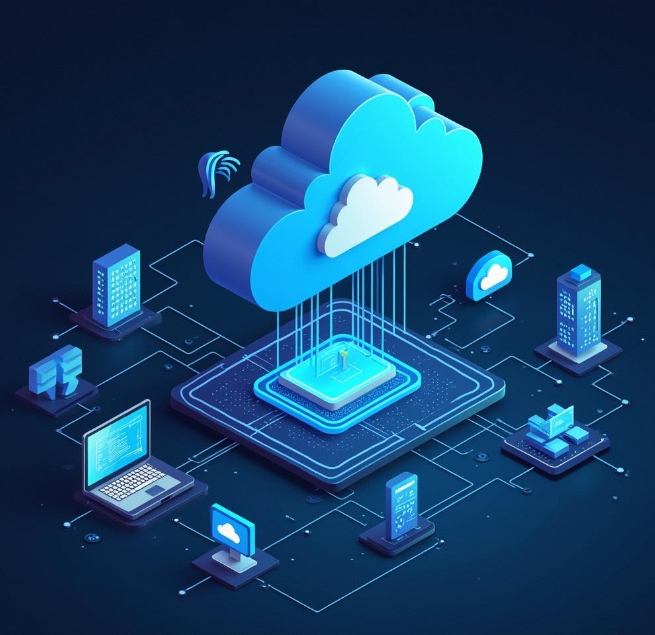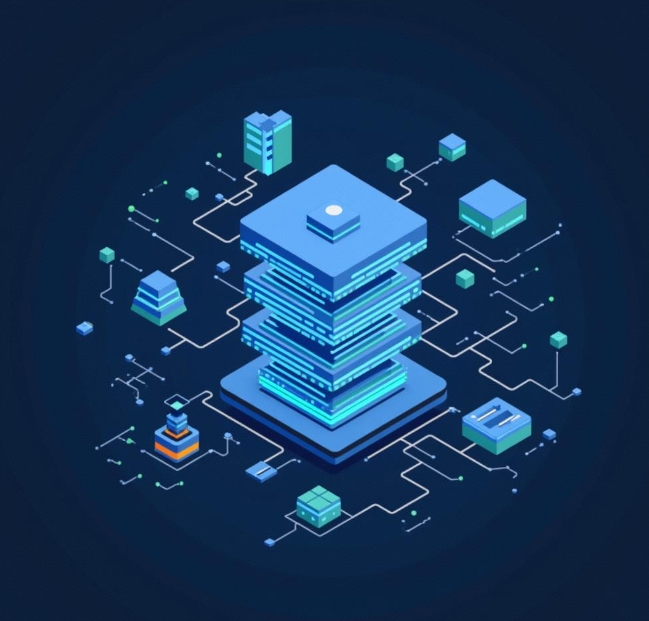Data Storage and Processing Methods in IoT Development
- latest articles
- 1.DApp Development & Customization: Merging Diverse Market Needs with User Experience 2.Analysis of the Core Technical System in DApp Project Development 3.How to achieve cross-chain interoperability in Web3 projects? 4.How does the tokenization of points reconstruct the e-commerce ecosystem? 5.How to Set and Track Data Metrics for a Points Mall? 6.What is DApp Development? Core Concepts and Technical Analysis 7.Inventory of commonly used Web3 development tools and usage tips 8.Development of a Distribution System Integrated with Social E-commerce 9.Six Key Steps for Businesses to Build a Points Mall System 10.What is DApp Development? A Comprehensive Guide from Concept to Implementation
- Popular Articles
- 1.Future Trends and Technology Predictions for APP Development in 2025 2.Analysis of the DeFi Ecosystem: How Developers Can Participate in Decentralized Finance Innovation 3.From Zero to One: How PI Mall Revolutionizes the Traditional E-commerce Model 4.DAPP Development | Best Practices for Professional Customization and Rapid Launch 5.How to Develop a Successful Douyin Mini Program: Technical Architecture and Best Practices 6.Recommended by the Web3 developer community: the most noteworthy forums and resources 7.From Cloud Computing to Computing Power Leasing: Building a Flexible and Scalable Computing Resource Platform 8.Shared Bike System APP: The Convenient Choice in the Era of Smart Travel 9.How to Create a Successful Dating App: From Needs Analysis to User Experience Design 10.From Design to Development: The Complete Process of Bringing an APP Idea to Life
With the continuous development of Internet of Things (IoT) technology, IoT application scenarios are gradually expanding across various industries, from smart homes to smart cities, from intelligent transportation to industrial automation, bringing unprecedented transformations. In these applications, how to effectively store and process vast amounts of data has become a crucial topic in IoT system design. This article will delve into data storage and processing methods in IoT development, analyze current mainstream technologies and challenges, and propose some solutions.
I. Characteristics of IoT Data
Before discussing data storage and processing in IoT, we first need to understand the unique characteristics of data generated by IoT. IoT devices collect various types of data in real-time through sensors and other devices, typically exhibiting the following features:
Massive Data: The number of IoT devices is enormous, and over time, both the number of devices and the volume of data generated grow exponentially. Therefore, efficiently storing and processing this massive data becomes critical.
Diverse Data Types: IoT data includes sensor data (such as temperature, humidity, pressure), image and video streams, and device statuses. These data types are not only varied but also have different requirements for storage and processing.
High Real-time Requirements: Many IoT applications require data to be collected and processed in real-time. For example, intelligent transportation systems need to adjust traffic signals based on real-time traffic flow, and industrial automation systems need to monitor equipment status in real-time to prevent failures. This poses significant challenges to traditional data storage and processing methods.
Distributed Data Generation: IoT devices are often widely distributed, with data generated at scattered locations and frequent environmental changes. This requires data storage and processing systems to have high distributed capabilities and fault tolerance.
Therefore, to address these challenges, IoT data storage and processing methods must be highly flexible, scalable, and real-time.

II. IoT Data Storage Methods
IoT data storage can be divided into two main categories: local storage and cloud storage.
1. Local Storage
Local storage refers to IoT devices or edge devices (such as gateways) directly saving data locally. Its advantage lies in storing data close to the source, reducing latency and meeting some real-time requirements. Common local storage methods include:
Device Internal Storage: Some simple IoT devices (like smart sensors, smart locks) have built-in storage space to temporarily store collected data locally. Typically, this storage space is small and suitable for storing small amounts of data and simple processing.
Edge Computing Storage: Edge computing devices (such as gateways, routers) connect multiple IoT devices and can store and preprocess local data. Edge devices have stronger processing capabilities and storage space, enabling preliminary data analysis, compression, and filtering before uploading the processed data to the cloud or central servers.
This method is suitable for IoT applications with high real-time requirements and small data volumes, reducing delays caused by network transmission. However, the drawbacks include limited storage space and the complexity of managing and maintaining local storage when the number of devices is large.
2. Cloud Storage
Cloud storage involves uploading data collected by IoT devices to the cloud for centralized storage and management. Cloud storage offers advantages such as high scalability, low maintenance costs, and convenient data sharing, making it widely used in large-scale IoT systems.
Distributed Storage: Cloud storage typically uses a distributed architecture, dispersing data across multiple servers to enhance reliability and redundancy. Common cloud storage technologies include HDFS (Hadoop Distributed File System) and object storage systems like Amazon S3 and Google Cloud Storage.
Elastic Storage: Cloud storage provides on-demand scalable storage capacity. As the number of IoT devices and data volume grow, storage capacity can be elastically adjusted according to actual needs, eliminating concerns about hardware procurement and maintenance.
Data Backup and Recovery: Cloud storage offers robust data backup and recovery mechanisms, effectively ensuring data security. Even if devices or local storage fail, data can be promptly restored.
However, cloud storage also has drawbacks. For instance, data upload and download are limited by network bandwidth, potentially causing delays, and for privacy-sensitive data, the security of cloud storage requires special attention.
III. IoT Data Processing Methods
IoT data processing methods are also diversifying, mainly including local processing and cloud processing.
1. Local Processing (Edge Computing)
Edge computing is a key concept in IoT data processing. It moves computation and data storage from the cloud to "edge" devices near the data source, enabling localized data processing and analysis to reduce data transmission latency and improve system response speed.
Data Preprocessing: Data preprocessing is the most common application in edge computing. Edge devices can clean, filter, and compress data, ensuring only necessary data is uploaded to the cloud, reducing unnecessary data transmission burden.
Real-time Processing: Applications with extremely high real-time requirements, such as intelligent transportation and smart security, must process data in real-time at the edge. Local computation and analysis significantly reduce response times, enhancing system real-time performance and reliability.
Intelligent Decision-Making: Some edge devices can perform simple intelligent decisions. For example, in industrial automation, edge devices can determine if equipment is faulty based on real-time sensor data and take timely measures to prevent issues from escalating.
Edge computing effectively improves system response speed and reliability, reducing dependence on central servers, but it faces challenges of limited computing power and storage space. Efficiently implementing data processing on edge devices is a key issue.
2. Cloud Processing
Cloud processing involves transmitting data collected by IoT to cloud servers, where powerful computing resources handle data storage, analysis, and decision-making. Cloud processing offers strong computing and storage capabilities, enabling large-scale data analysis and model training.
Big Data Processing: IoT-generated data is typically massive, so cloud data processing relies on big data technologies like Hadoop and Spark. Through distributed computing and storage technologies, these large datasets can be efficiently processed to extract valuable information.
Machine Learning and Artificial Intelligence: Cloud processing can leverage machine learning and AI technologies for data analysis and prediction. For example, by learning from historical data, cloud platforms can predict equipment failures, optimize energy consumption, and enhance user experience.
Data Sharing and Collaborative Processing: Cloud platforms can share data and collaborate with other systems via APIs, enabling cross-industry IoT data integration and intelligent applications.
However, cloud processing faces challenges such as network bandwidth limitations, data transmission delays, and privacy security issues. Especially in scenarios requiring real-time feedback, cloud processing delays may affect system performance.

IV. Challenges and Development Trends in IoT Data Storage and Processing
Although IoT data storage and processing technologies have made significant progress, they still face a series of challenges:
Processing Capacity for Massive Data: The increasing number of IoT devices makes efficiently processing massive data and avoiding bottlenecks in storage and processing a critical issue.
Data Privacy and Security: IoT involves large amounts of sensitive data, such as personal privacy and corporate confidential data. Ensuring data privacy and security, and preventing data leaks and misuse, are major current concerns.
Real-time Requirements: Many IoT applications have extremely high real-time data requirements. Balancing real-time performance with data accuracy and integrity is a technical challenge.
Standardization and Interoperability: IoT devices and systems are highly heterogeneous. Ensuring seamless data exchange and collaboration between different devices and platforms still requires addressing standardization issues.
With continuous technological advancements, IoT data storage and processing methods will continue to evolve. In the future, the integration of edge and cloud computing, the application of 5G technology, and the deep integration of big data and AI will provide more possibilities for IoT data processing.
V. Conclusion
The rapid development of IoT brings enormous opportunities to various industries but also presents unprecedented challenges for data storage and processing. By adopting local and cloud storage, combined with edge and cloud computing processing methods, these challenges can be effectively addressed. As technology advances, IoT data storage and processing methods will become more efficient and intelligent, providing stronger support and guarantees for various IoT applications.
-

How to Use IoT Development to Enhance Supply Chain Efficiency
With the rapid development of the global economy and the deepening of digital tr···
-

Development and Innovation of the Internet of Things in the Healthcare Sector
With the rapid advancement of information technology, the Internet of Things (Io···
-

Data Storage and Analysis Methods in IoT Development
The Internet of Things (IoT) is one of the most revolutionary innovations in tod···

 Blockchain
Blockchain










